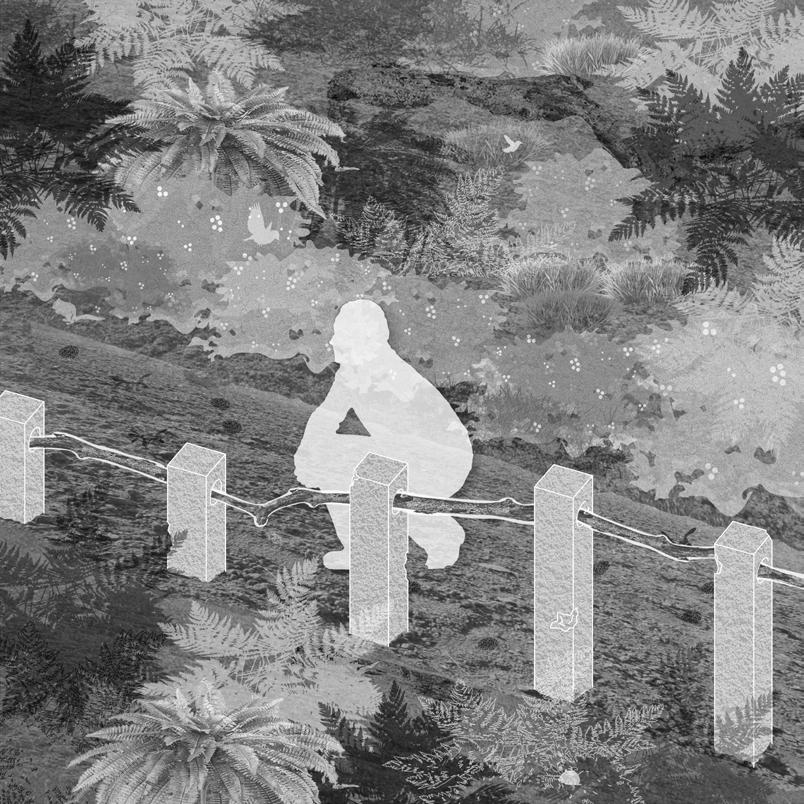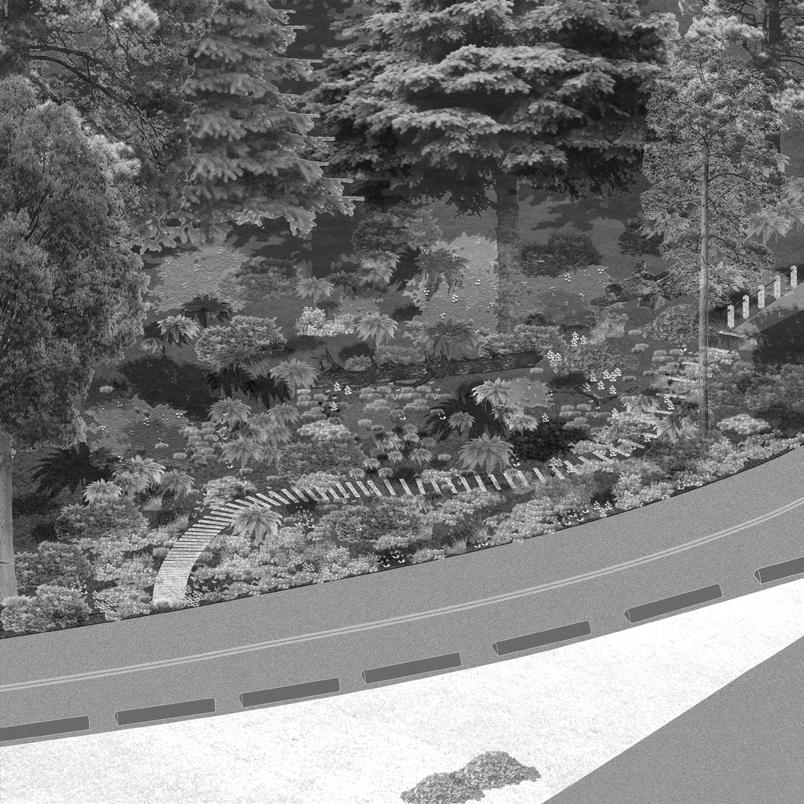
8 minute read
MEMBRANE LIVING
from Esha Sodhi Portfolio
by esha.sodhi
In Collaboration with Deryck Bagui
DES 301 STUDIO | Housing Next | Led by Mari Fujita, Ayme Sharma | WINTER 2022 BRIEF | Designing speculative housing typologies that support a complete neighbourhood
Advertisement
CONTRIBUTION conceptual and schematic design orthographic productions renders diagramming physical models illustrator photoshop revit enscape physical modeling
3D printing
Walls create boundaries that can limit a space’s future potential, while membranes foster the development of a cell by filtering the requirements for growth. MEMBRANE LIVING aims to break conventional building constraints to allow and foster the growth of individual needs and community. It modifies the co-operative housing typologies to include transparent and flexible spaces to build a stronger bond between residents and the broader neighborhood. Moveable membrane walls link up community fragments (education, commerce, recreation) into a mixed-use residential building while allowing residents to reconfigure their spaces in ways that foster change and evolution for generations to come.

GENERAL MASS
OVERALL
CONNECTING THE FRAGMENTS
RESIDENTIAL

COMMUNITY FRAGMENTS
EDUCATION
CONNECTING FRAGMENTS
NORTH ELEVATION
COMMUNITY
COMMERCE
APPLICATION OF RESIDENTIAL UNITS: 2 SIZES
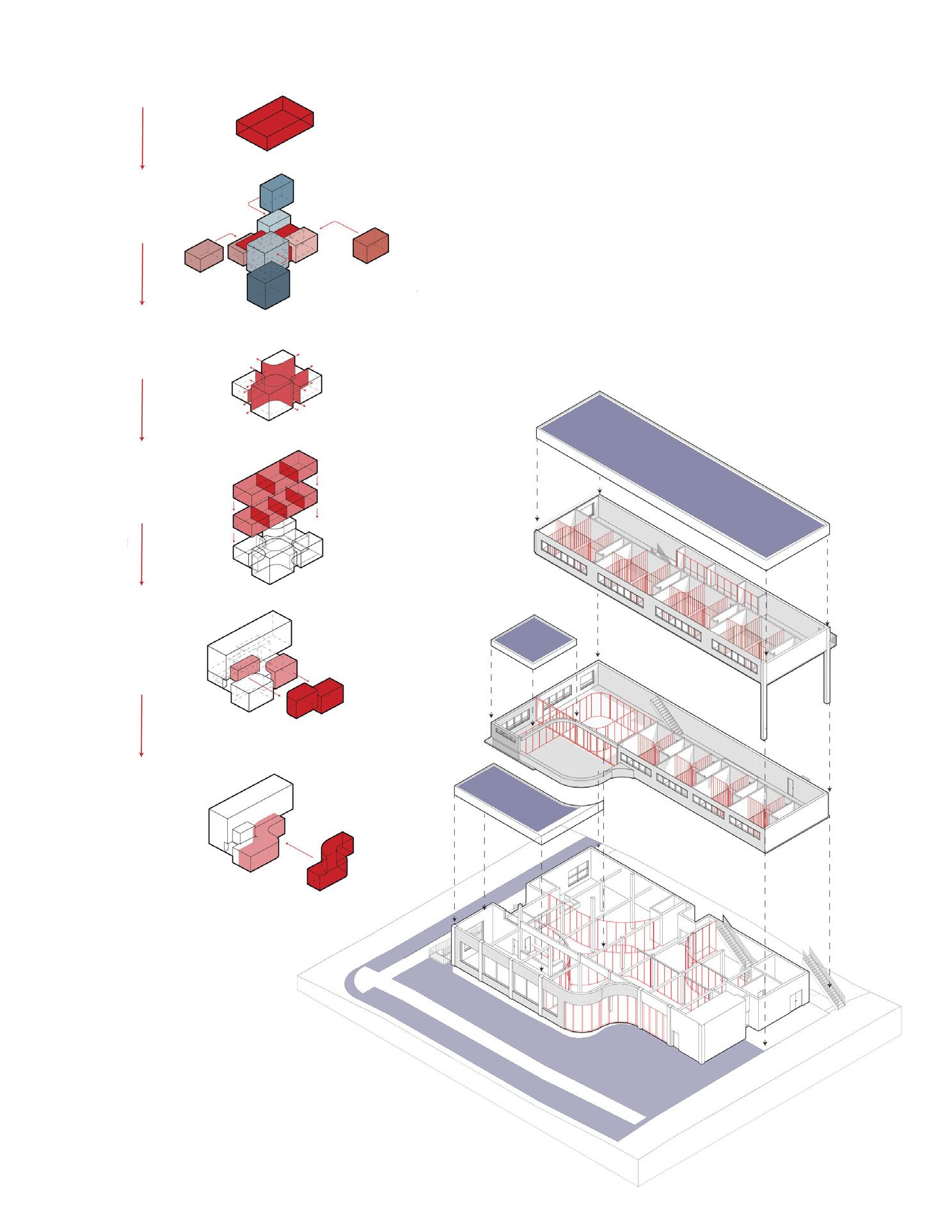


INTEGRATION OF OUTDOOR SPACE
PRIVATE AND PUBLIC
CENTRAL ATRIUM
WEST ELEVATION
SOUTH ELEVATION
Conceptualizing Programming

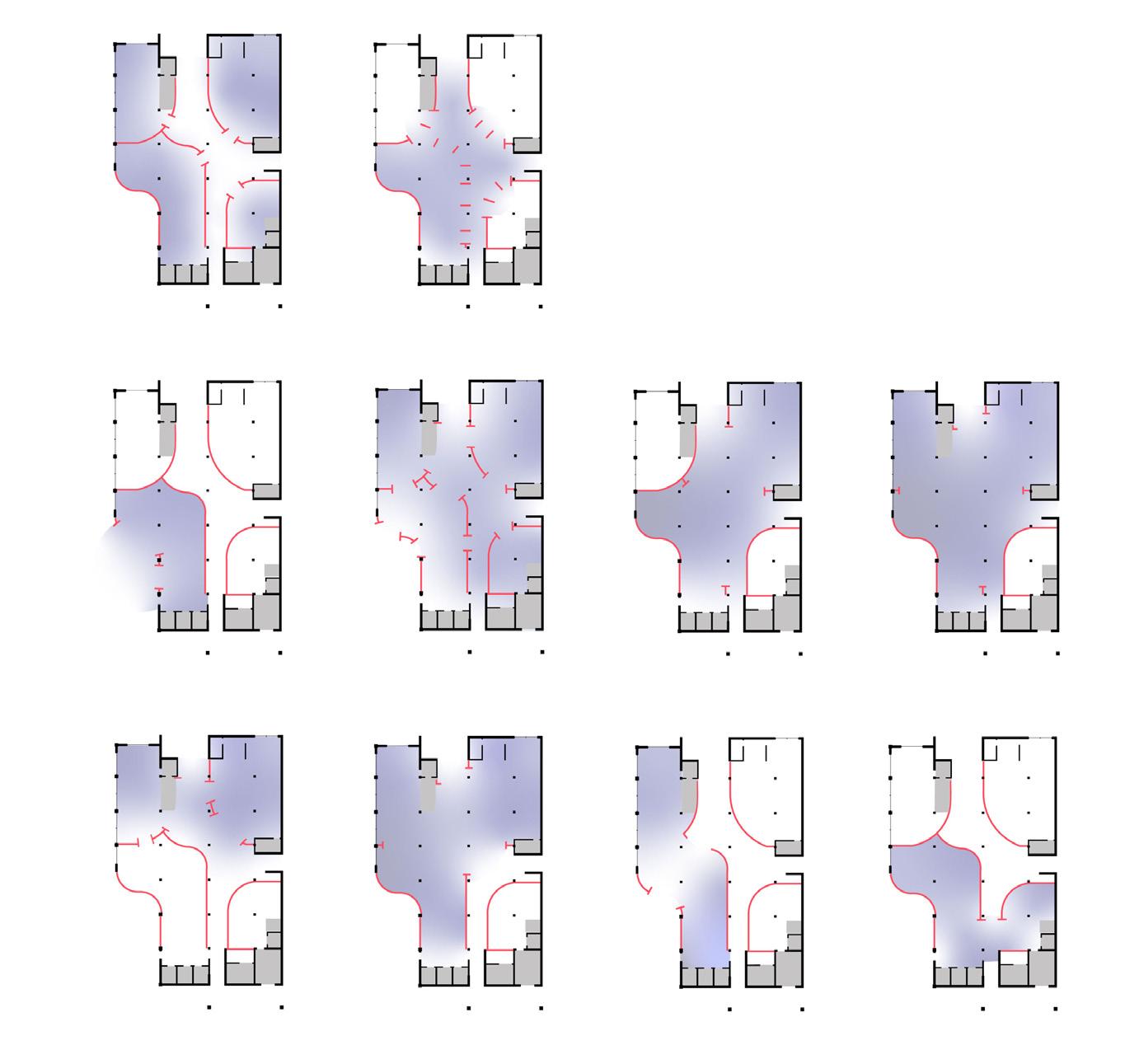

2nd FLOOR residential studios + communal space 3rd FLOOR residential studios

Functional Design
Our membrane wall panels allow for the building typology to be used beyond its original intent, as it is applicable to neighbourhood specific fragments and co-operative resident’s and community needs. The overall lifespan of the building is increased due to its open concept and multiple uses
MEMBRANE LIVING can use height of railing system to block a panel from twisting


RESIDENTIAL MEMBRANE CONFIGURATION creates suites with four or six spaces that can be configured in many ways tracks block panels from twisting stack on either track free to rotate in any way switch tracks movement along rail system to shorter
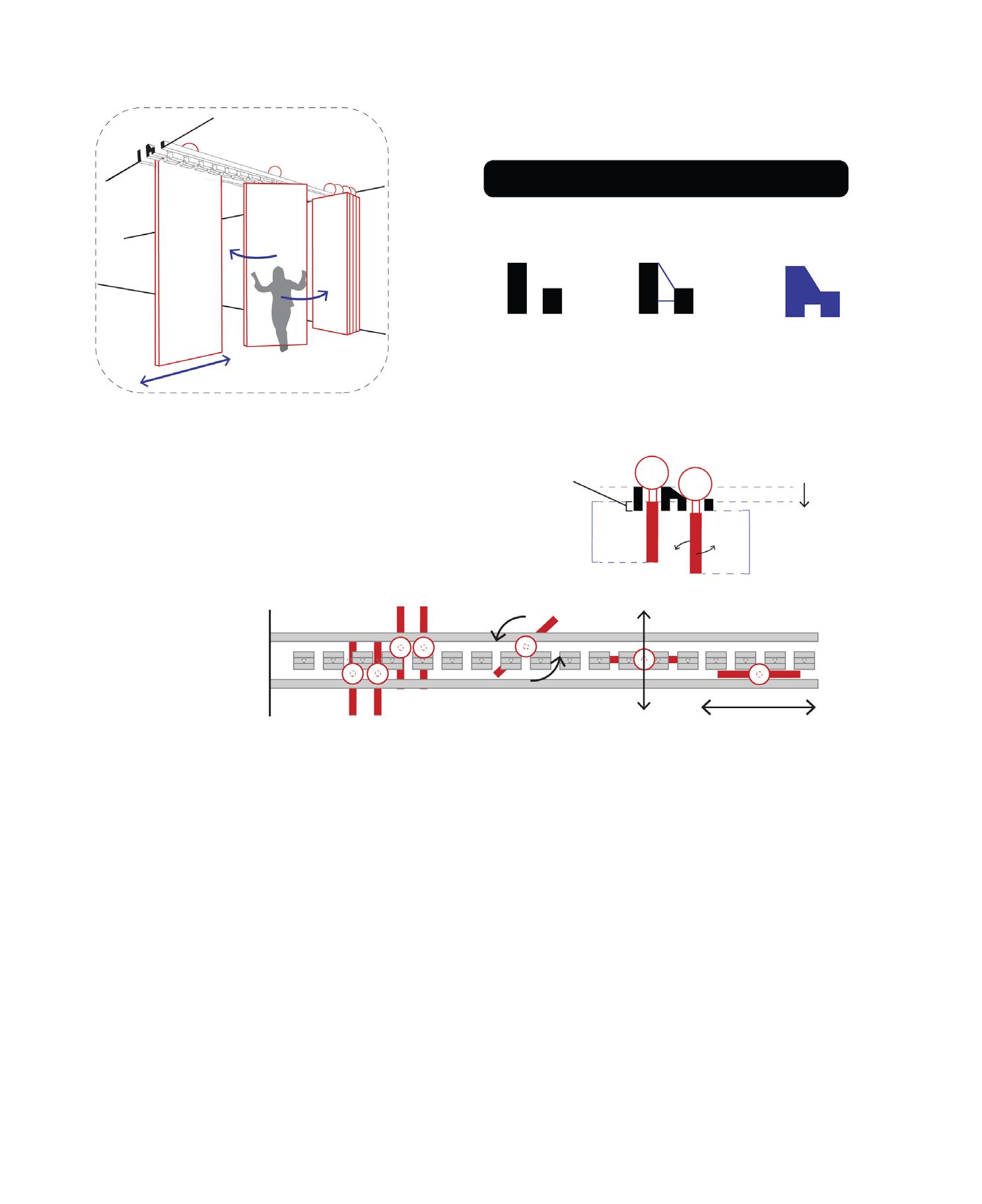

GREEN IN-BETWEEN
DES 202 STUDIO | Led by Mari Fujita, Travis Hanks | SPRING 2022 BRIEF | Designing a student space and library on UBC Campus
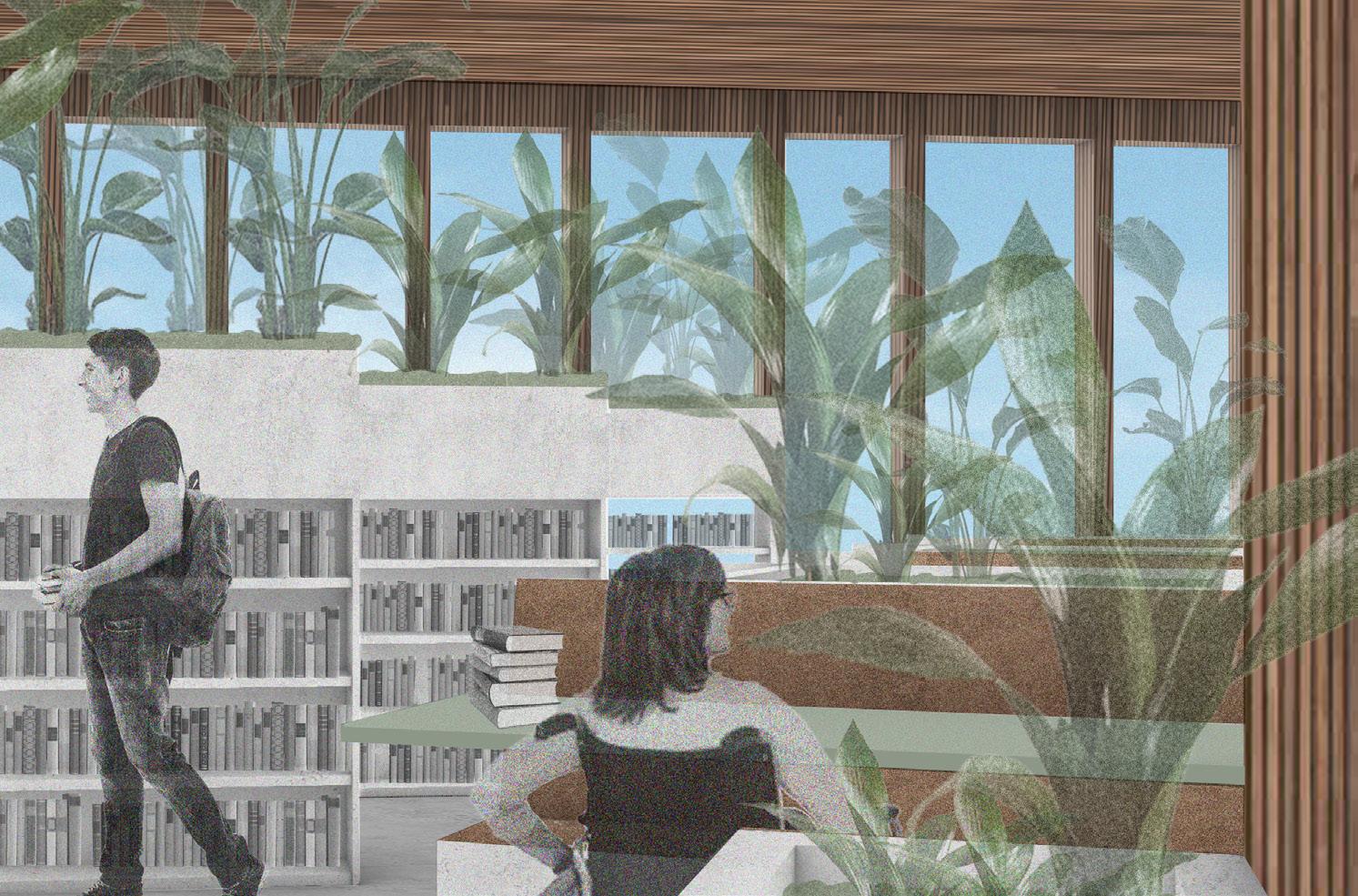

Individual Project CONTRIBUTION - ALL conceptual and schematic design orthographic productions renders diagramming


3D modelling illustrator photoshop rhino handsketching
Green In-Between is wedged between the busy, stressful campus and the peaceful dorms, beaches, and gardens. This site lends itself to be this transitory space where students can easily pass-by and use to connect to nature while studying or socializing. Through strategizing new circulation through the site, this form lures people through the breezeway into a welcoming terraced enclosure, prompting users to venture up to the library or down to the cafe. The plants indoors provide the perfect enclosures that filter the illuminating light onto their desks and lounging spaces. This building provides the perfect in-between space overlapping the academic and energizing ends of the site.
FINAL ORGANIZATION and CIRCULATION in-between transitional spaces elevator access throughout circulation
READING ROOM



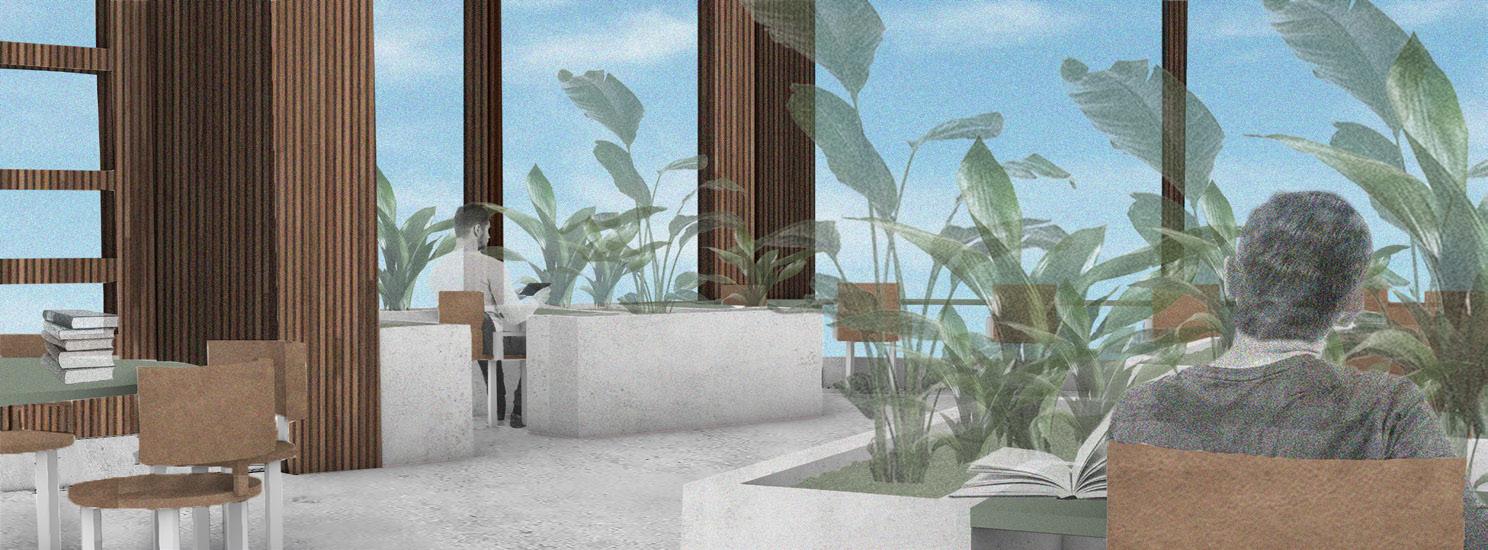
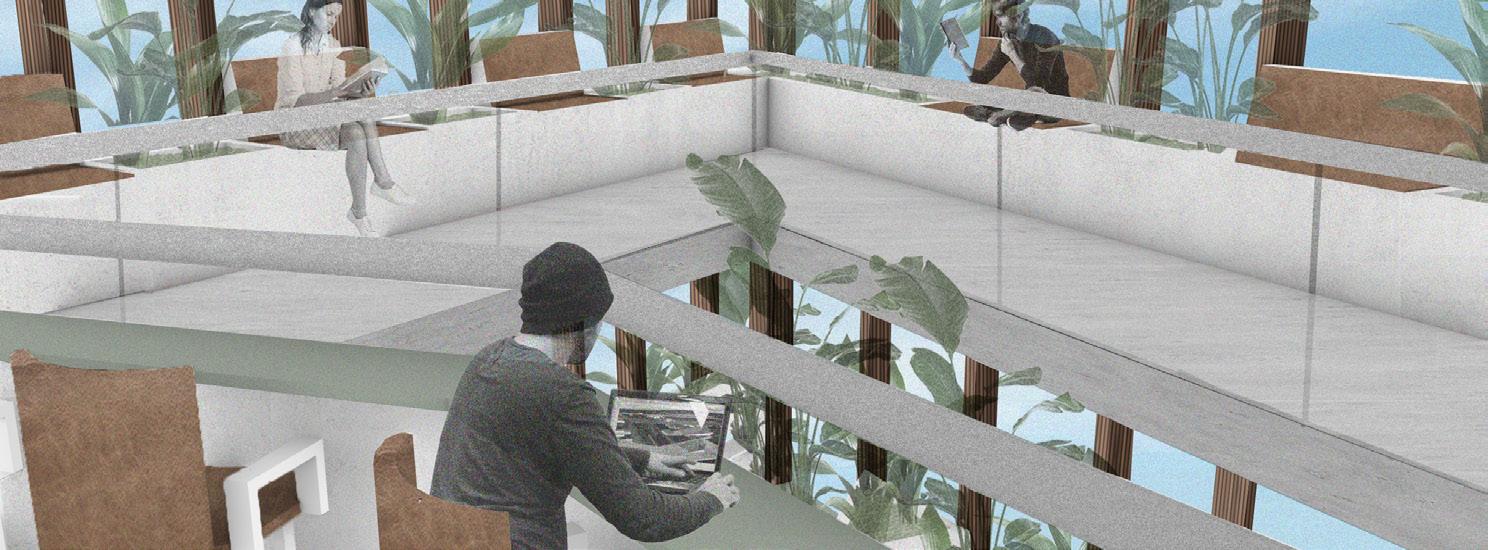
Wilderness At Play
In collaboration with Nishi Praveen Kumar
DES 302 STUDIO | Threshold | Led by Fionn Byrne | SPRING 2023
BRIEF | Envision alternative futures for Cumberland Point and the Brunette River through landforms, movement of water, and impact of collaborative species.
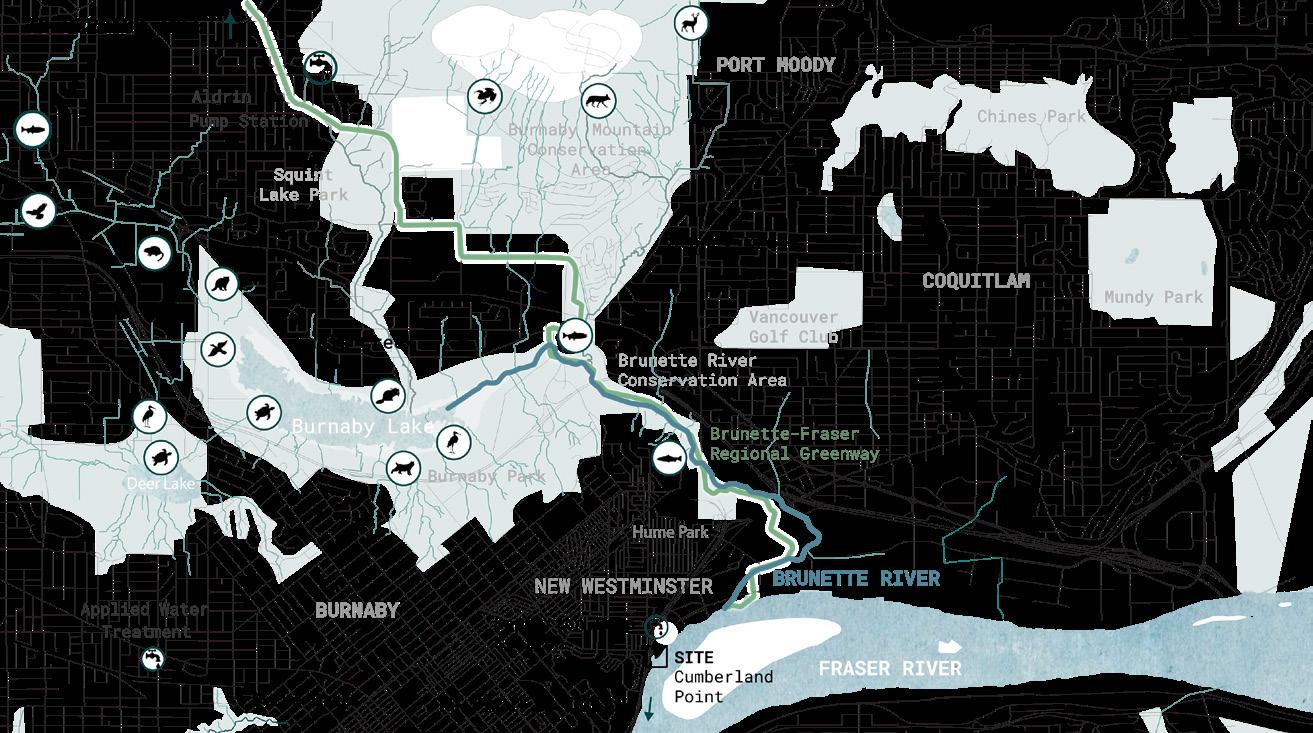
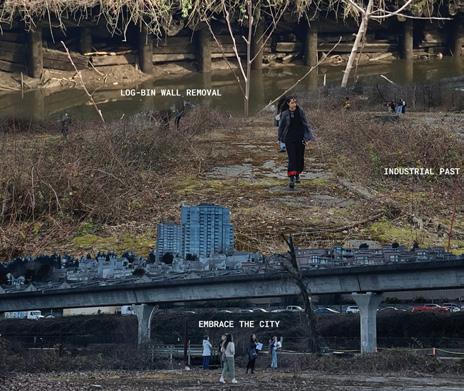
CONTRIBUTION conceptual and schematic design isometric drawings biodiversity research diagramming physical model detail drawings illustrator photoshop rhino
WATERSHED & ITS SUPPORTED SPECIES

the convergence of the brunette river, the fraser river, and regional greenway establishes the site as an important interaction site between wilderness and people physical modelling hand drawing
Design Principles
fostering a sense of empathy for the landscape through play, adventure, ecological awareness
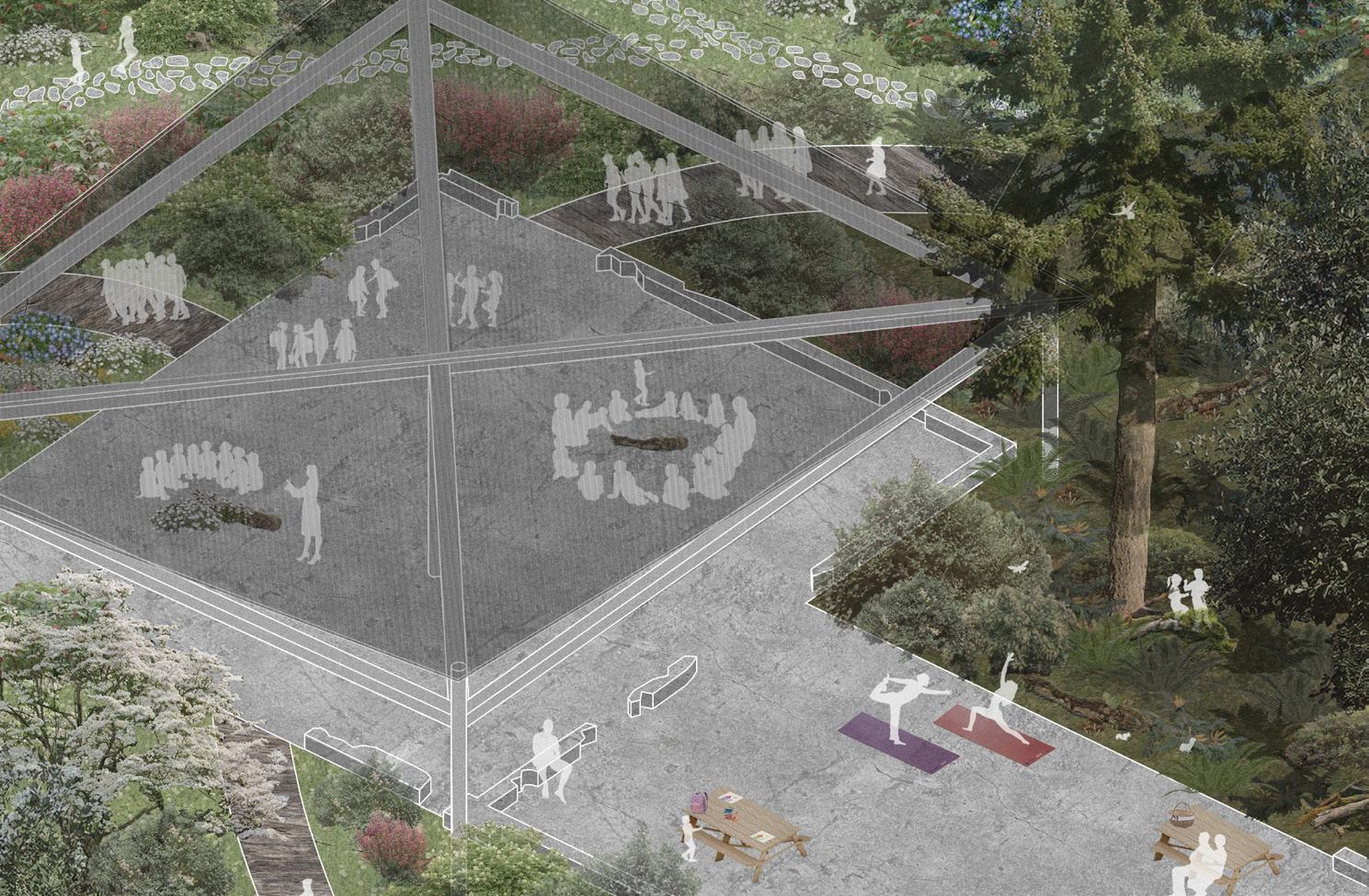


Urbanity has separated wilderness from people, and outdoor opportunities are hard to come by daily. These experiences are essential for people to grow empathy towards natural systems and coexist with other diverse ways of life. Cumberland Point, New Westminster historically has supported industrial practices and the vacant lot is at the ecological crucial convergence of the Brunette and Fraser River. The Brunette-Fraser Regional Greenway is a local opportunity that can be expanded on to provide an everyday access to multiple British Columbia natural landscapes and ecozones. Through dismantling the logbin wall and creating a riparian edge, the Wilderness At Play invites species of all kind to connect with the water and foster a space reciprocity through play.
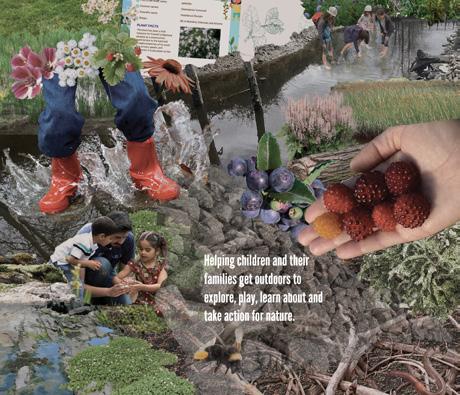
Site Plan





the paths encourage children to circulate through and break off the main path to visit secondary bases and explore the ecozones

Site Strategy
the strategy addresses the need for >30m riparian buffer to support the brunette river’s ecology while integrating human uses through the landscape
Before And After
the removal of the 4m tall logbin wall on the west side is crucial to create a riparian buffer habitat
BIODIVERSITY MAPPING interconnected riparian zones through feeding and shelter connections between plant and animal species

RECIPROCITY THROUGH PLAY lifetime of integrated wilderness
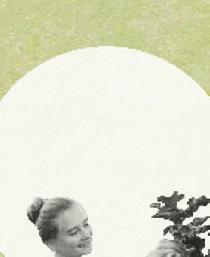
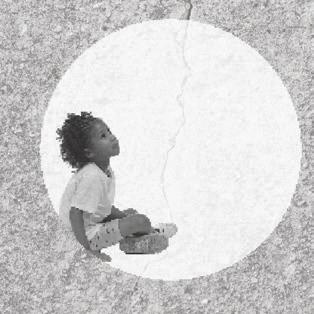

SAMPLE ECOZONE SPECIES [TIDAL FLATS] creating environments for all levels of the riparian buffer
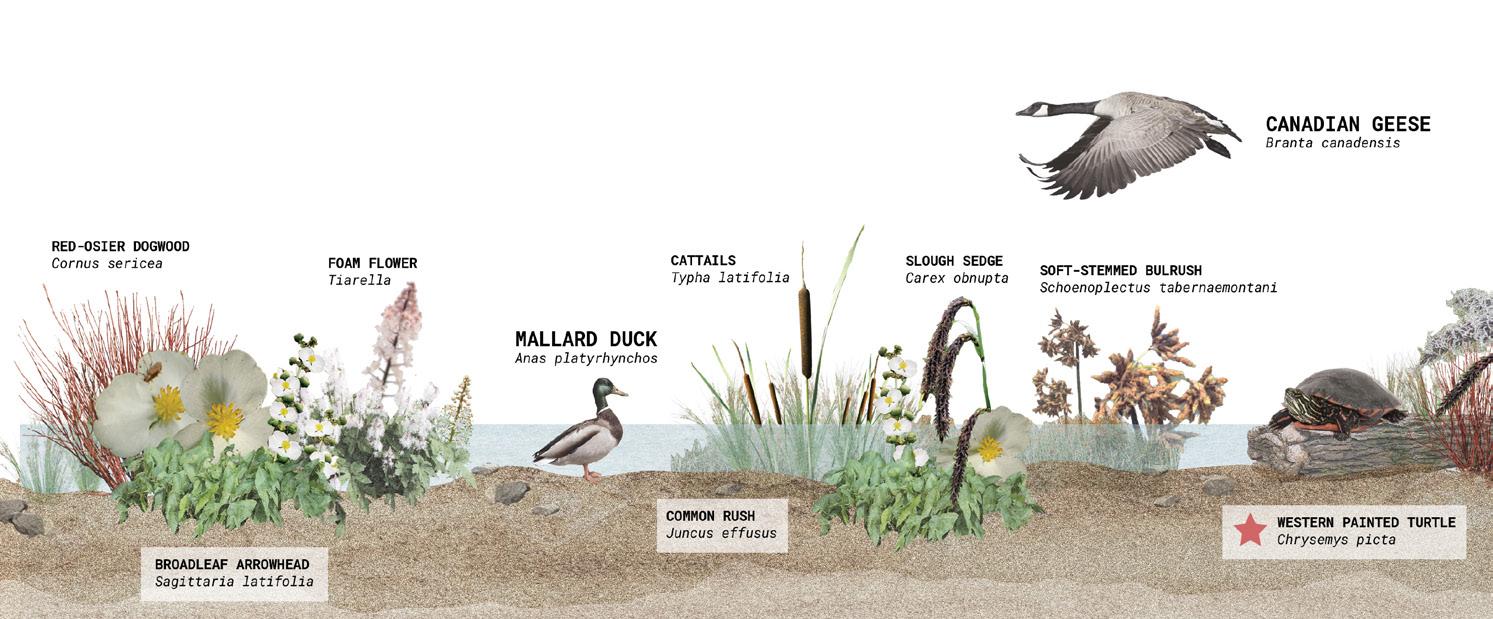


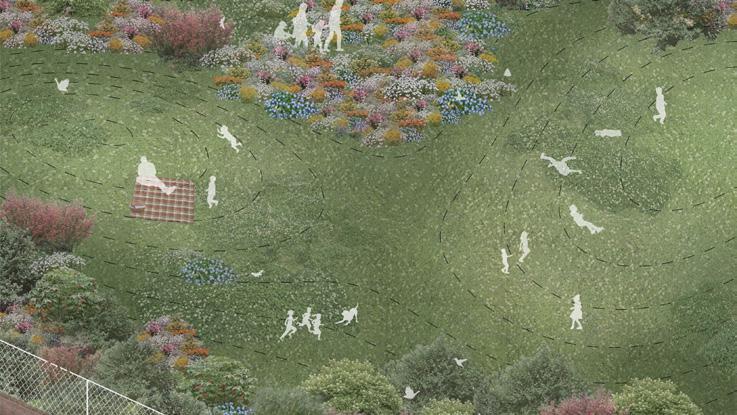
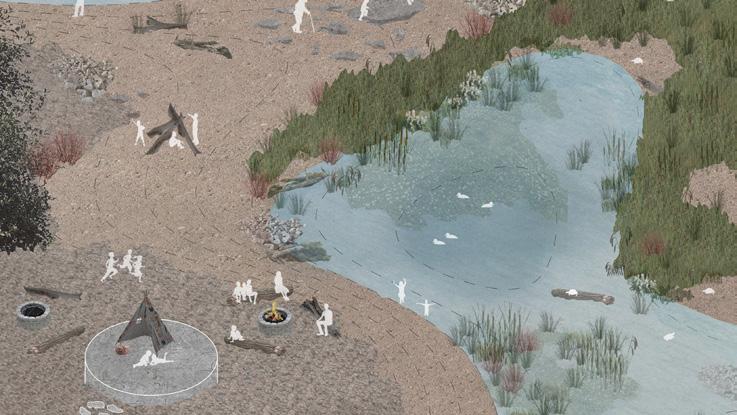
enCORE Barbara G. Laurie Student Design Competition 2022 | National Organization of Minority Architects
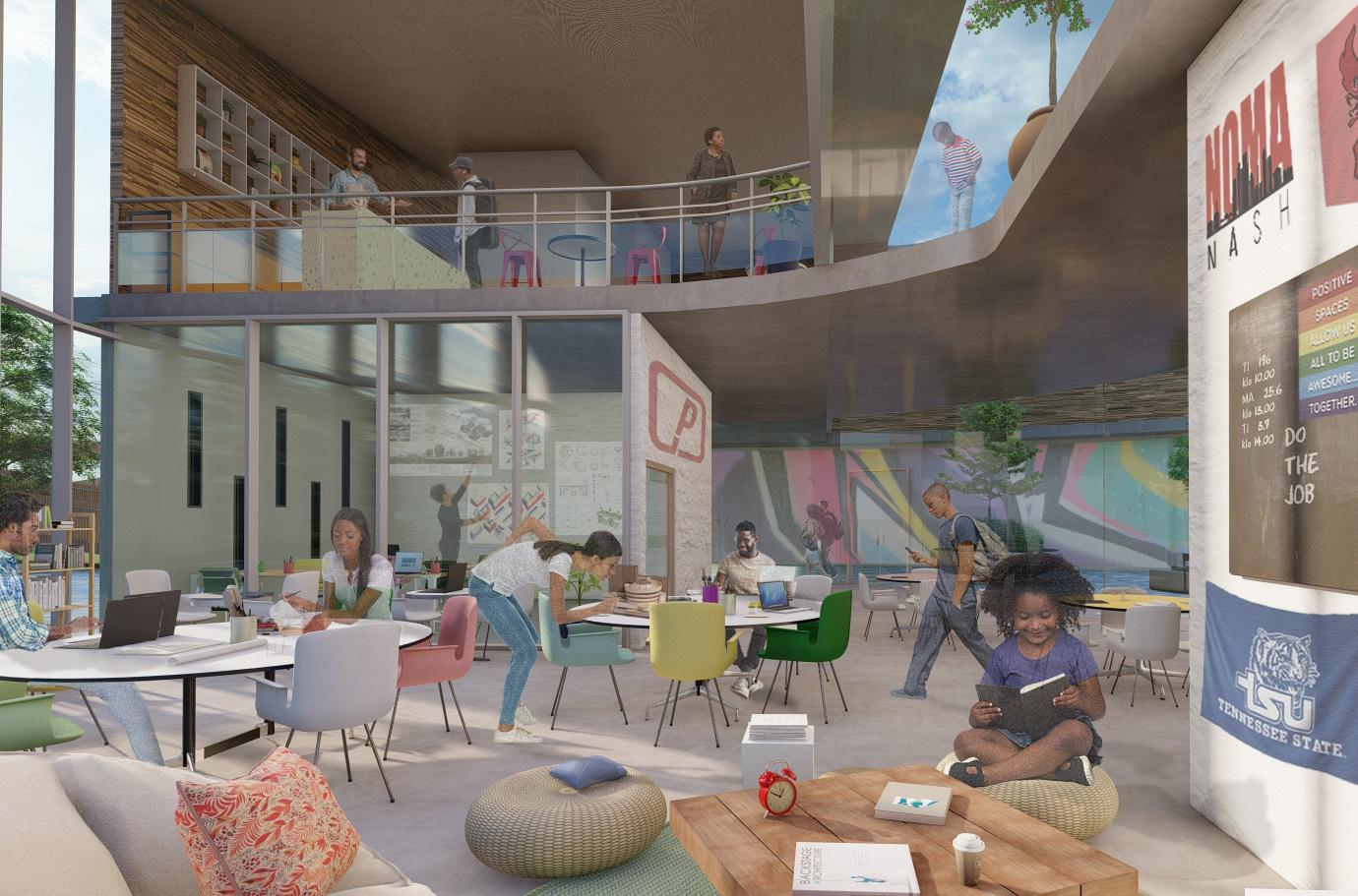
SITE northern nashville divided by the I-40
In collaboration with the 2022 UBC NOMAS DESIGN TEAM Alyssa C., Bridget B., Cedric L., Cynthia S., Deryck B., Ellen M., Heather B., Hellen C., Joud S., Miucci Y., Sinnie C., Soha H., Vivian K.
CONTRIBUTION conceptual and schematic design context research gentrification/displacement strategy renders diagramming revit photoshop illustrator rhino

1.MUSEUM AND STUDENT CENTER
2.BRIDGE
3.LIBRARY
4.AMPHITHEATRE
5.PAVILIONS
6.RAIN GARDEN
7.RETENTION POND
8.BIOSWALE
Siting Strategies
rezoning the site and rebridging the displacement caused by the I-40 and within the community

INTERWEAVING paths run through gathering points around the museum, student center, and library
As a product of redlining initiatives, the I-40 bifurcated and displaced many African American residents in the Northern Nashville neighbourhood. enCORE reclaims the sense of place for the community by replacing the existing pedestrian bridge with a new one that actively serves as a connection between Hadley Park, Pearl-Cohn High School, HBCUs, and Jefferson St. The creation of this educational and cultural hub rekindles broken communities, tying together the past, present, and future in its site design. The project includes rain gardens, an auditorium, exhibition spaces, and a student center, with the central courtyard mirroring the I-40, re-interpreting the divide as a community gathering hub. This site considers both social and environmental sustainability in its intervention, acknowledging that placemaking is never stagnant and continuously changes with its people.
HEART SHAPE streamlining facades to parallel the added bioswale and I-40
RECONNECTING bridge itself as an extension of the land over the I-40
SPLITTING THE PROGRAMMING in order to maximize the space given for each section of the cultural center
MAINTAINING A CONNECTION maximize the space for each section of the cultural center
RESPONDING TO ADJACENCIES healing the split with bridges, paths, and glass courtyards

STUDENT CENTRE + MUSEUM PROGRAMMING

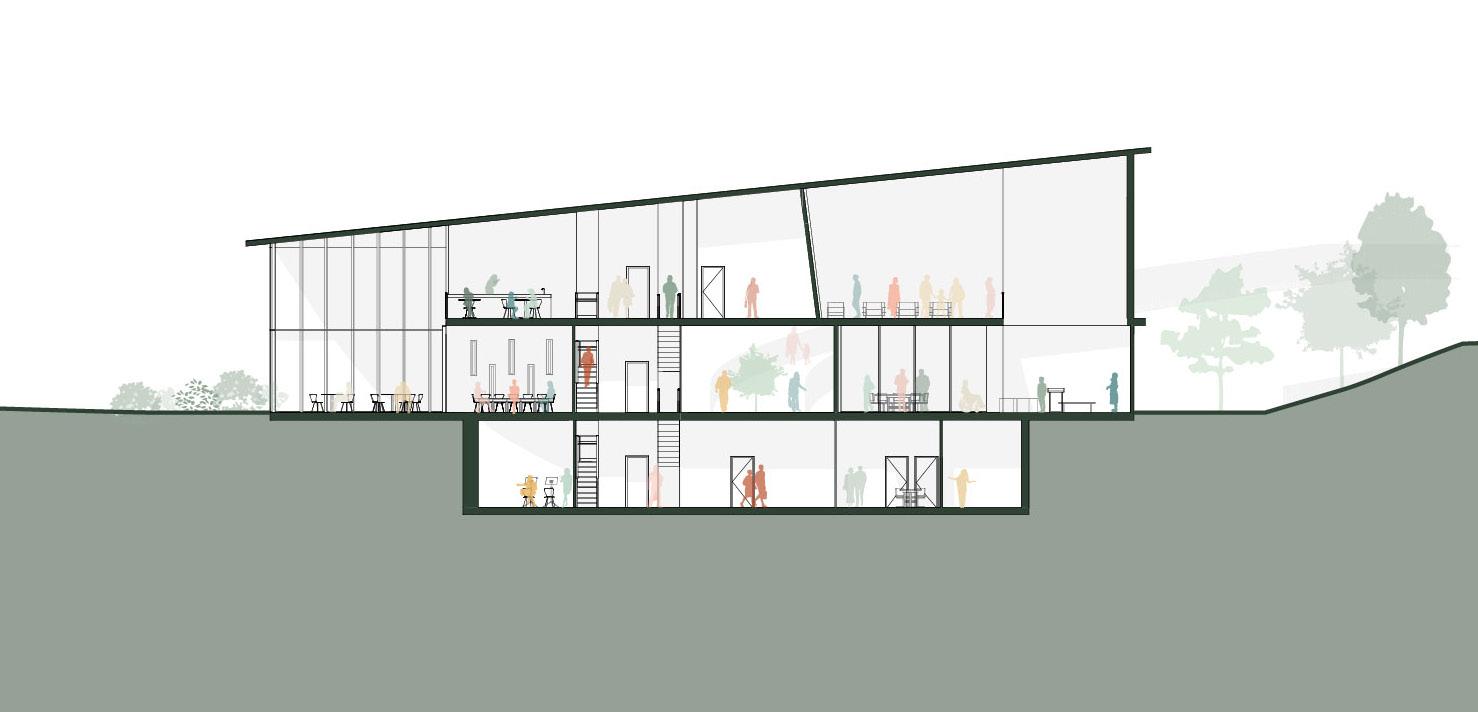

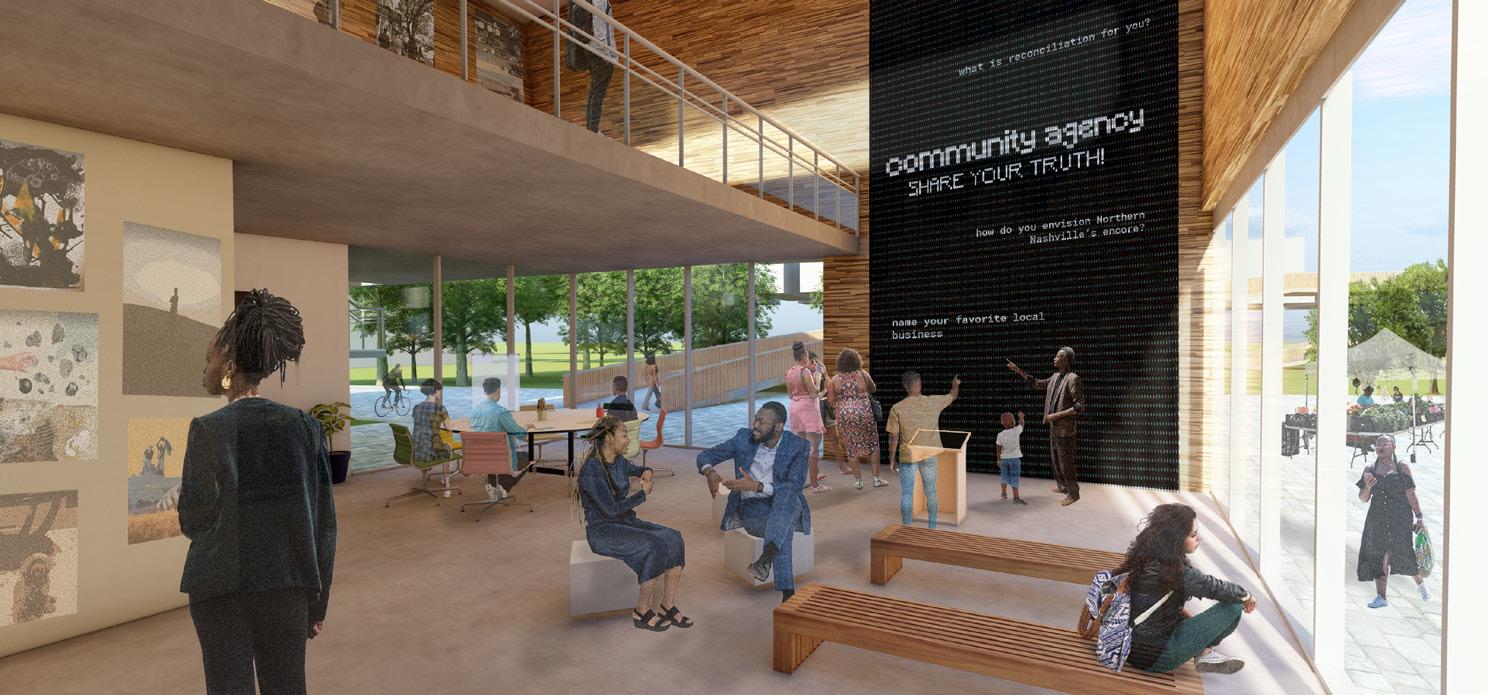

Sign Of The Tides
In collaboration with Kate Bonnell
DES 201 STUDIO | On The Edge | Led by Arthur Leung | WINTER 2021 BRIEF | Addressing sea level rise on the edge of False Creek

CONTRIBUTION
CONTEXT ron basford park, southeast end of granville island along the false creek
Without visual and physical changes to a user’s routine, the impending consequences of climate change can be ignored. SIGN OF THE TIDES creates an experiential intertidal environment that influences users’ consciousness of climate change while simultaneously creating a new learning environment along the shoreline. Located at Ron Basford Park, users can interact with the new biodiversity welcomed within the tidal pools and develop a meaningful relationship with the water’s edge. The bottommost walkway sits at mean water level meaning that during high tide the area becomes flooded with water and is unusable. The red gathering mounds indicate where that water will be in 50 years. The impact happens in ten, twenty, and thirty years when the path gradually becomes less and less accessible, and users visually watch that change over time and see the impacts of climate change affect the habitat.


INTERVENTION DESIGN components in relation to sea level rise projections
REMOVE DETAIL SECTION IF NOT SURING
EST 2100 HIGH WATER LEVEL the red mounds indicating 100 year water levels offer reflection moments when the water levels have disrupted their sea wall path
JUMP RIGHT IN!
Individual Project
DES 202 STUDIO| Led by Mari Fujita, Travis Hanks | SPRING 2022 BRIEF | Carve a Landscape and then Design a Wall to Read Your Carved Artifact
The wall is a translation of the artifact’s adventurous landscape into real-life play. The children can a deeper reading through the immersed physical experience.
ARTIFACT a carved children’s fantasy book turned whimsical landscape
Materials
INNER LAYER Dense Foam WALL PANELS HDPE

OUTER LAYER Faux Leather PVC
CORE Metal Rod (D=2.5in)
SPOTTING THE TREASURE front elevation rhino hand drawing illustrator physical modelling

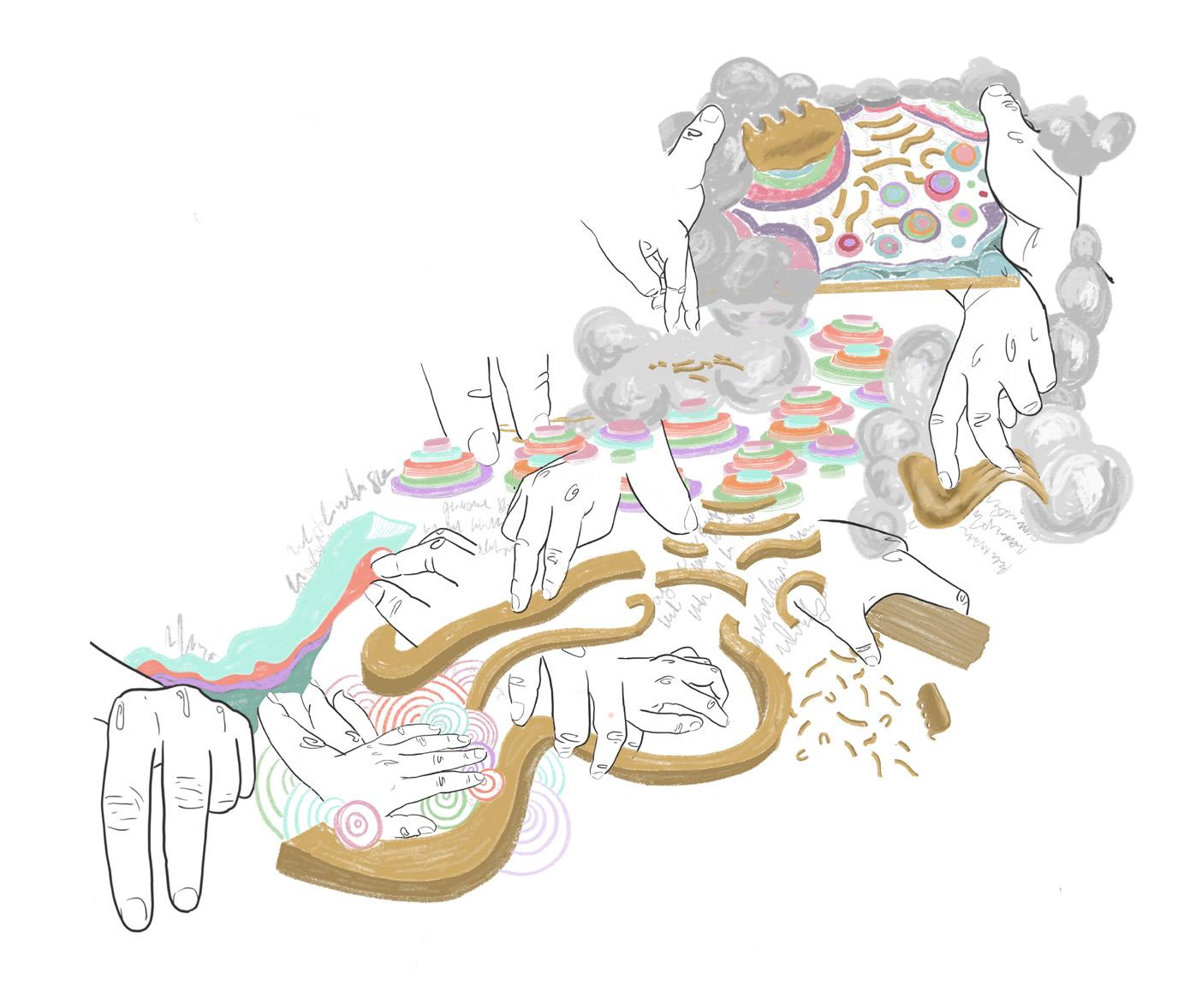
1.Aloha Beaches
2.Candy Cone Forest
3.Maze of Wonders

4.Pit of Nightmares
5.Cloud Mountains

6.Treasure Lookout
READING THE WALL the senorial connections
READING how a child might READ the artifact

Rest In Place
In collaboration with Allegra Haynes
DES 302 STUDIO | Threshold | Led by Fionn Byrne | SPRING 2023 BRIEF | Use form, material, and circulation to create an emotional, conceptual or symbolic relationship with an old growth tree of interest

CONTRIBUTION
SITE grand fir tree in the UBC totem ravine
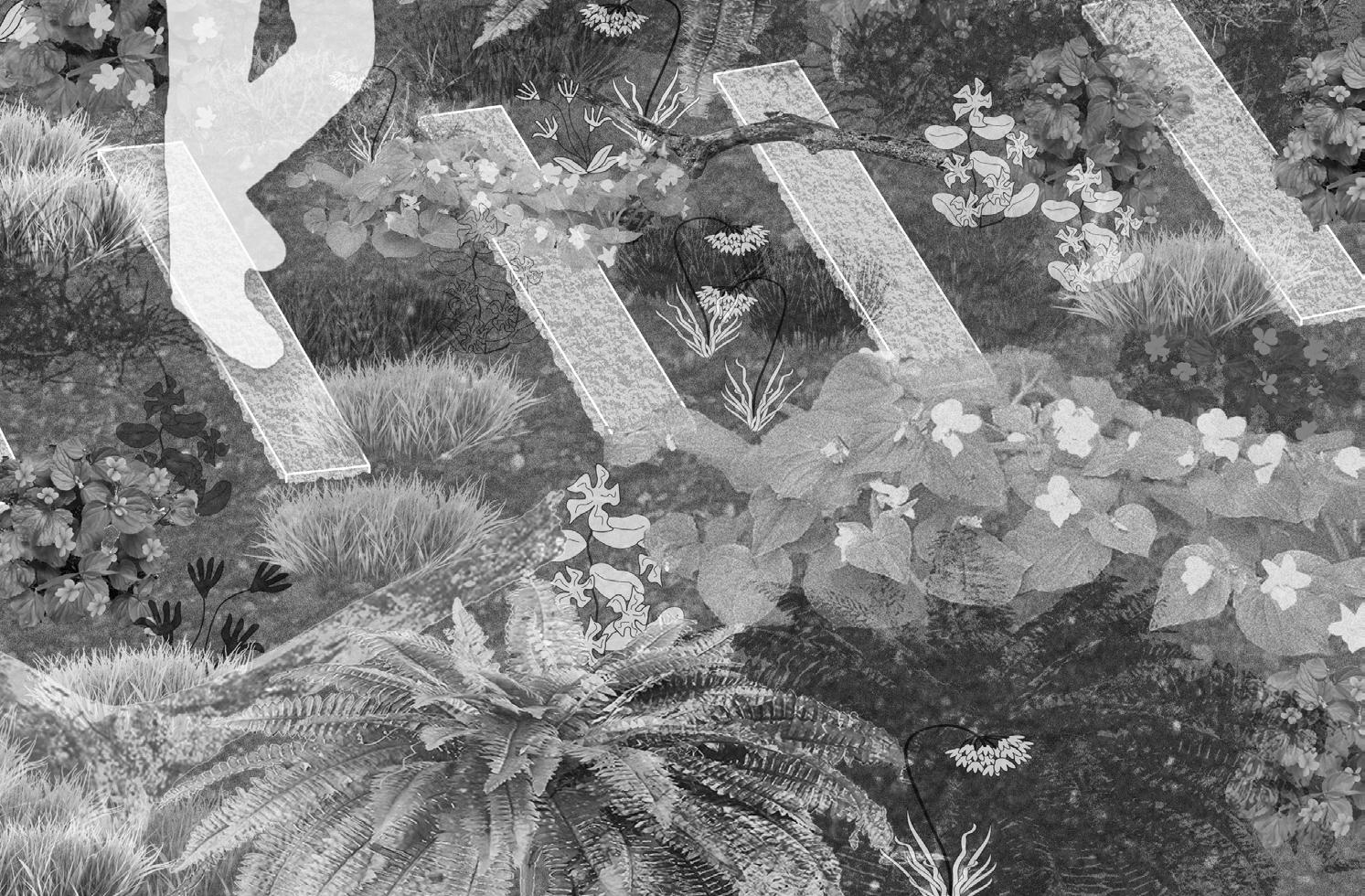
MATERIALS comparing human timelines with the grand fir prompts for a temporary proposal

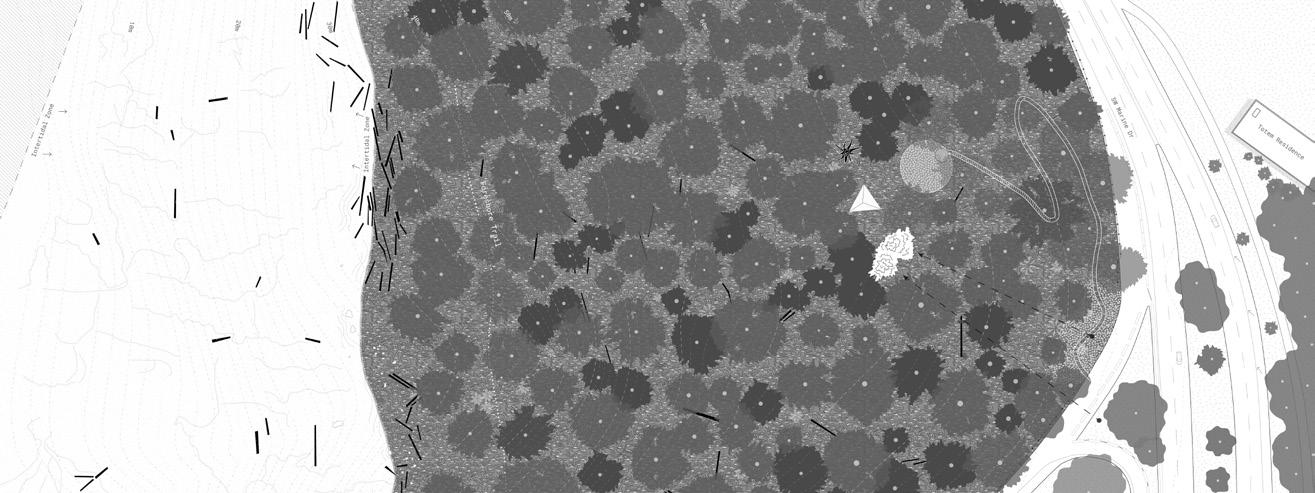
Our project Rest in Place reflects upon the grand fir and dead tree relationship that stands out in the UBC Totem Ravine. This hidden, temporary intervention curates an experiential rebirth of the subject’s perspective on their role in the larger ecosystem. The trees are inaccessible, therefore the way we can understand them is through the ground materials that make up the environment that supports them. Different sequences test the subject’s values and compares their lifespan, relationships, and contributions with other non-human actors with the 400 year old tree. The seeded concrete decomposes over time, invoking a strong sense of humility, as this temporary intervention acts as a way for the materials in the forest to speak for themselves while being designed to be reclaimed by the ravine

RE-ASSESSING YOUR PERSPECTIVE
subject is compelled to consider what they are willing to stomp on to achieve their goals
RE-ORIENT YOUR SENSES 2
RE-ORIENT YOUR SENSES 2
subject is lured down this pathway which demands sensorial engagement to navigate subject reaches new perspectives through reflecting on the emotional relationship between the grand fir, the dead tree, and the cenotaph flowers ferns, bushes, seeds, branches, logs DEAD TREE seeded concrete post
RE-ASSESSING YOUR PERSPECTIVE
kinnikinnick native groundcover planted for erosion control subject is compelled to consider what they are willing to stomp on to achieve their goals
Reflect And Rebirth 3
sword fern erosion control grass 5 inches snowberry native groundcover planted for erosion control flowers ferns, bushes, seeds, branches, logs subject is lured down this pathway which demands sensorial engagement to navigate subject reaches new perspectives through reflecting on the emotional relationship between the grand fir, the dead tree, and the cenotaph height change prompts people to get closer to the ground wooden handrail
60cm roots
RE-ORIENT YOUR SENSES 2
30 cm subject is lured down this pathway which demands sensorial engagement to navigate blended backslope prevents undercuts from running water sloped tread 1m shrubery overhang 20cm



90-180cm roots
Reflect And Rebirth 3
subject reaches new perspectives through reflecting on the emotional relationship between the grand fir, the dead tree, and the cenotaph

HUMAN
GRAND FIR TREE average lifespan 250 years old
DETAIL sequence

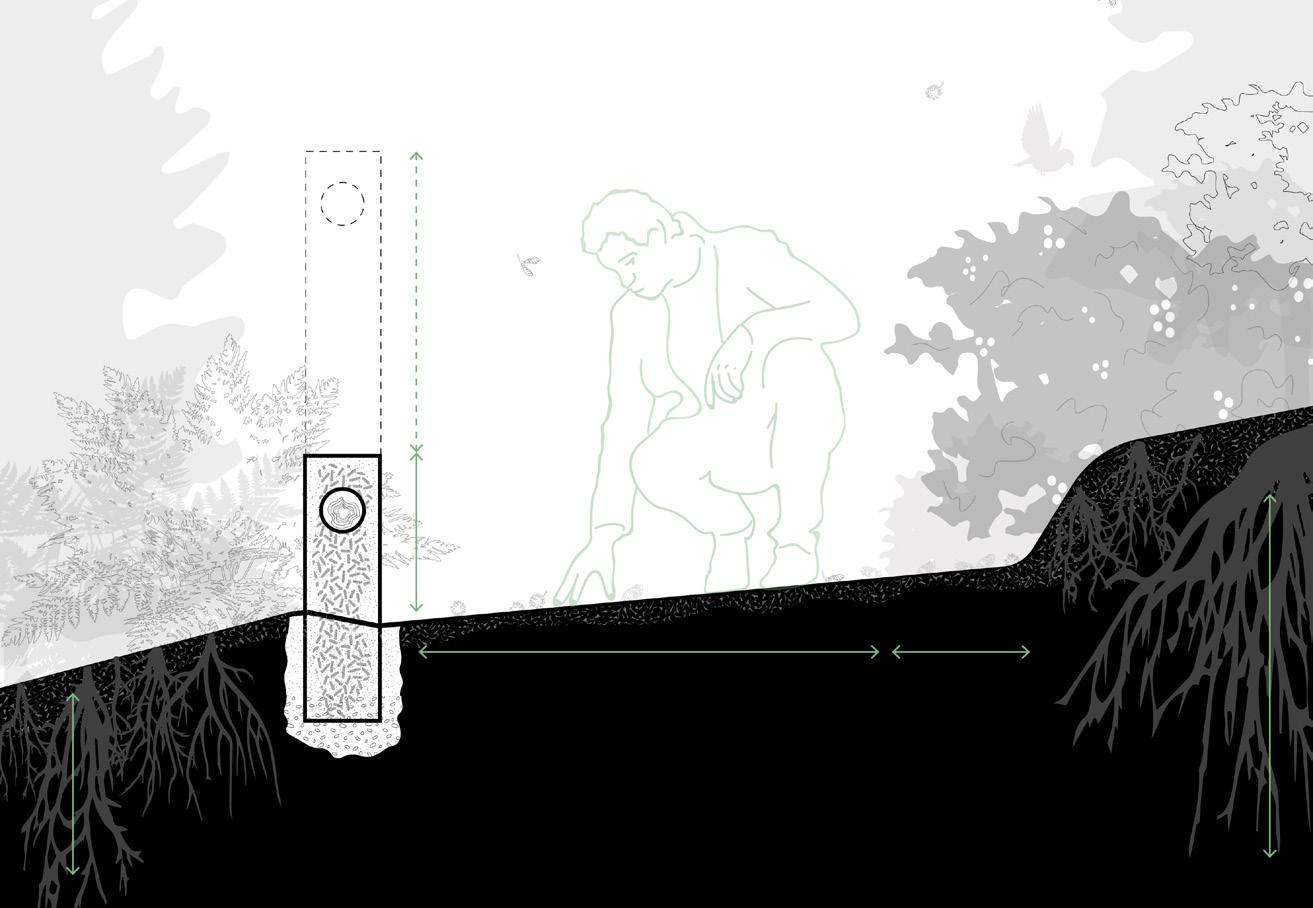
GRAND FIR TREE average lifespan 250 years old
HUMAN sequence 1 seeded concrete platform 5 in nodding onion native decomposing materials henderson’s shooting star native stream violet native seeded concrete post found branch acts as railing sword fern native crushed stone 5 in concrete footing 8 in 35 in 400cm 50cm 100m seeded concrete platform drain stepped seat curved seat backing promotes viewing between trees large stepped seat creates enclosure and shifts perceived scale sand base flower bed 17cm

HUMAN average lifespan 80 years old GRAND FIR
HUMAN average lifespan 80 years old GRAND FIR REST AREA
REST AREA
3 LEADING CONCEPT comparing roles and lifetimes 39 38
Sequence Isometrics
sequence 1 re-assess your perspective sequence 2 re-orient your senses

